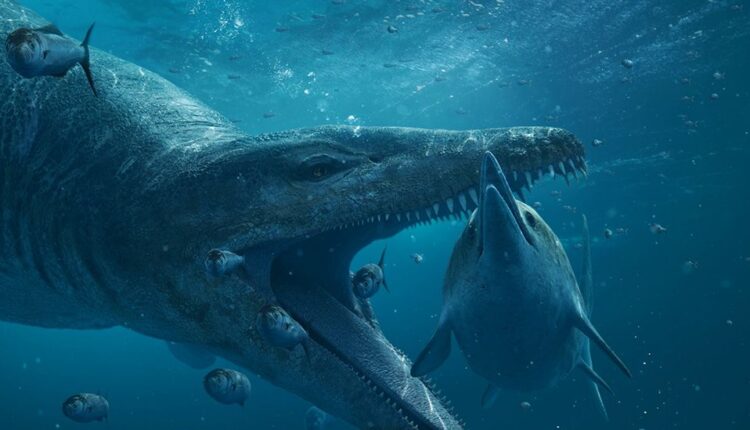The skull of a colossal sea monster has been extracted from the cliffs of Dorset’s Jurassic Coast. It belongs to a pliosaur, a ferocious marine reptile that terrorised the oceans about 150 million years ago.
The 2m-long fossil is one of the most complete specimens of its type ever discovered and is giving new insights into this ancient predator.
The skull will be featured in a special David Attenborough programme on BBC One on New Year’s Day.
There are gasps as the sheet covering the fossil is pulled back and the skull is revealed for the first time.
It’s immediately obvious that this pliosaur is huge and beautifully preserved.
There isn’t a specimen anywhere else to match it, believes local palaeontologist Steve Etches.
“It’s one of the best fossils I’ve ever worked on. What makes it unique is it’s complete,” he tells BBC News.
“The lower jaw and the upper skull are meshed together, as they would be in life. Worldwide, there’s hardly any specimens ever found to that level of detail. And if they are, a lot of the bits are missing, whereas this, although it’s slightly distorted – it’s got every bone present.
The skull is longer than most humans are tall, which gives you a sense of how big the creature must have been overall.
You can’t help but focus on its 130 teeth, especially those at the front.
Long and razor sharp, they could kill with a single bite. But look a little closer – if you dare – and the back of each tooth is marked with fine ridges. These would have helped the beast to pierce the flesh and then quickly extract its dagger-like fangs, ready for a rapid second attack.
The pliosaur was the ultimate killing machine and at 10-12m long, with four powerful flipper-like limbs to propel itself at high speed, it was the apex predator in the ocean.
“The animal would have been so massive that I think it would have been able to prey effectively on anything that was unfortunate enough to be in its space,” says Dr Andre Rowe from Bristol University.
“I have no doubt that this was sort of like an underwater T. rex.”
Meals would have included other reptiles such as its long-necked cousin, the plesiosaur, and the dolphin-like ichthyosaur – and fossil evidence reveals that it would have even feasted on other passing pliosaurs.
How this fossil skull was recovered is extraordinary.
It started with a chance find during a stroll along a beach near Kimmeridge Bay on southern England’s famous World Heritage Jurassic Coast.
Steve Etches’ friend and fellow fossil enthusiast Phil Jacobs came across the tip of the snout of the pliosaur lying in the shingle. Too heavy to carry, he went to fetch Steve and the pair rigged a makeshift stretcher to take the fossil fragment to safety.
But where was the rest of the animal? A drone survey of the towering cliff face pinpointed a likely location. The problem was the only way to excavate it was to abseil down from the top.
Removing fossils from rock is always painstaking, delicate work. But to do this while dangling on ropes from a crumbling cliff, 15m above a beach, requires another order of skill.
The courage, dedication, and the months spent cleaning up the skull, have certainly been worth it. Scientists from across the globe will be clamouring to visit the Dorset fossil to gain fresh insights into how these amazing reptiles lived and dominated their ecosystem.
Source: BBC




Comments are closed.